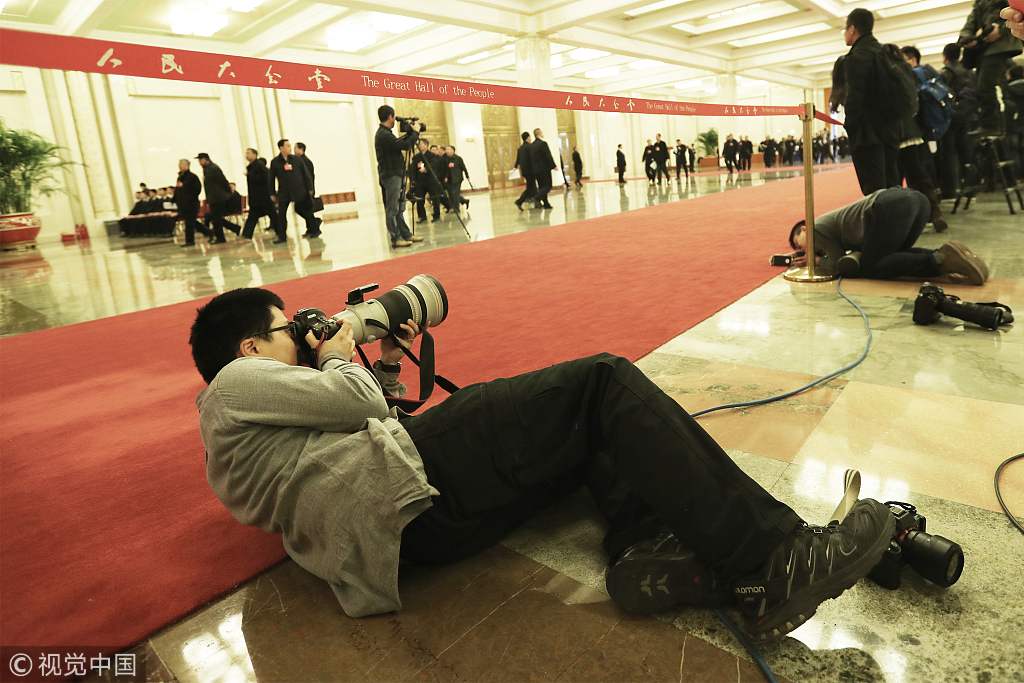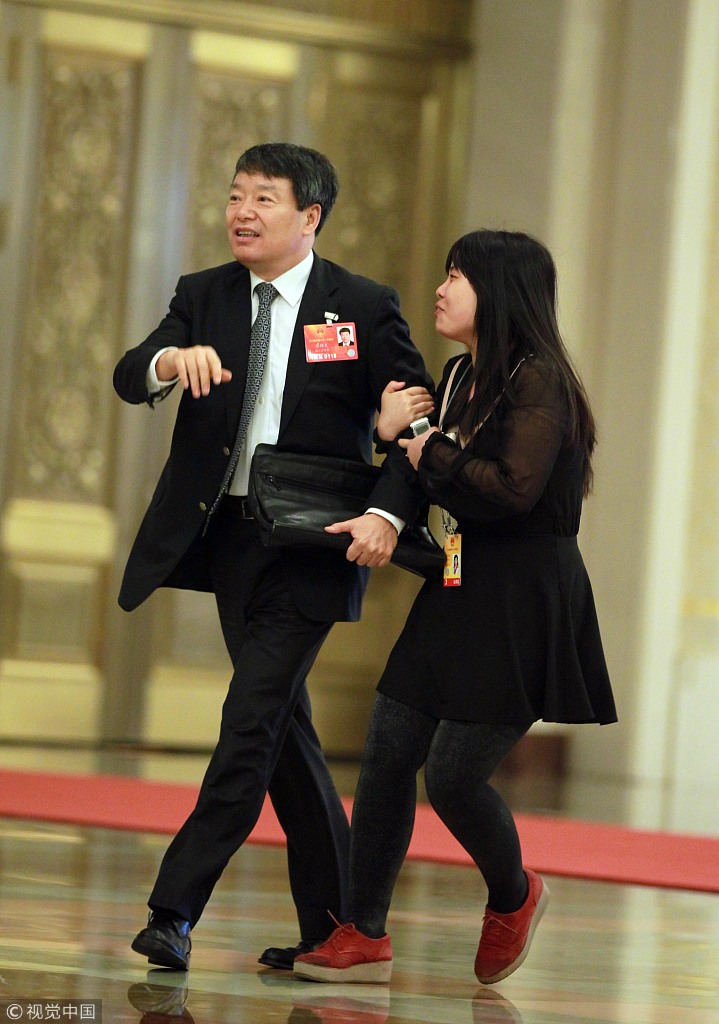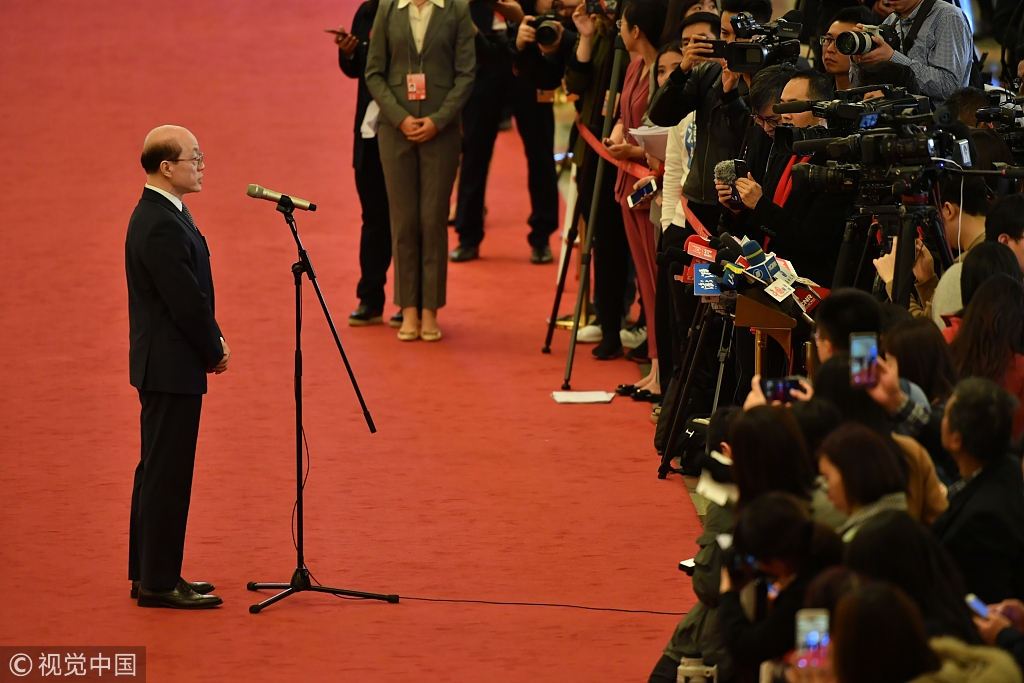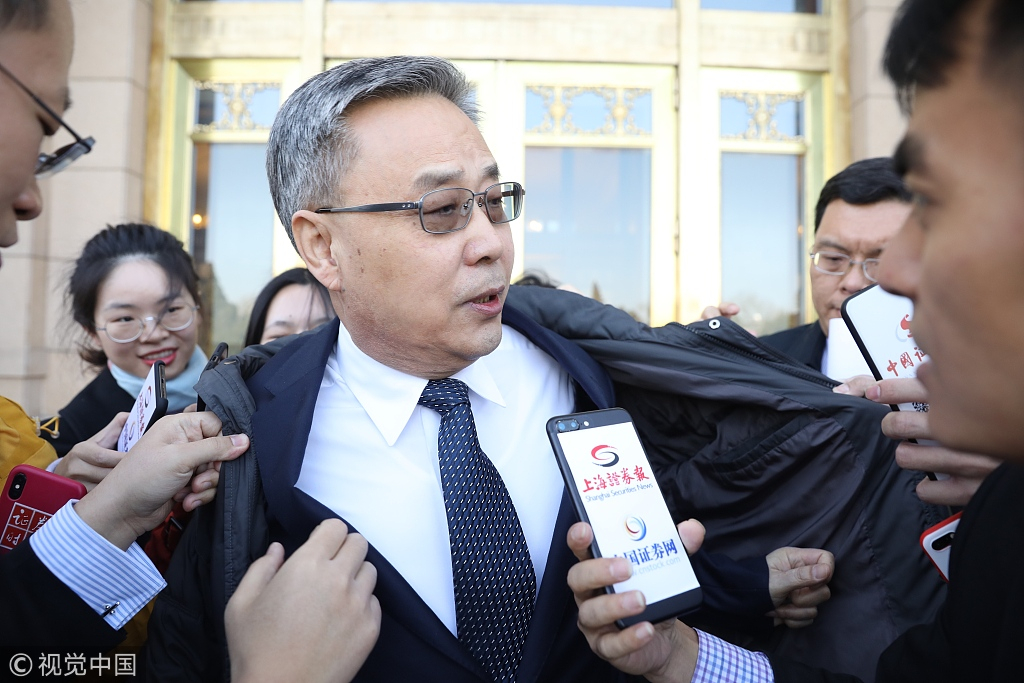It could be mind-boggling for international reporters who come to cover China's national legislation sessions for the first time. Why is a press conference held at the lobby of the Great Hall of The People called the minister's corridor instead of a press conference?
It's especially puzzling when there isn't a corridor at the lobby to begin with.
During this busy time of China's National People's Congress and Chinese People's Political Consultancy Conference in March, the lobby is buzzing with lawmakers and reporters. High-ranking officials and grass-root representatives alike are exposed to cameras in the open space.
A rare opportunity to tackle key figures about important affairs therefore manifests itself. Rarer still if you consider how thin the chances of accessing a group of people who manage the country of 1.4 billion could be. Rarity leads to competition. Veteran reporters are quick at pinpointing and stopping their targets out of thousands moving attendees. What the juniors lack in experience, they make up for in alertness, ready to rush to every spot where cameras are suddenly directed.

Zhou Xiaochuan (C), the then governor of China's central bank, is surrounded by reporters during China's annual legislative sessions in March 4, 2014, Beijing. /VCG Photo
Zhou Xiaochuan (C), the then governor of China's central bank, is surrounded by reporters during China's annual legislative sessions in March 4, 2014, Beijing. /VCG Photo
It's become a common scene in the lobby that reporters flocking to block newsworthy people leave them barely enough space to breath. This can't be the most efficient way of communication when the lawmakers, CPPCC members and officials being pressed to answer tough questions are also being pressed literally too hard to make their voice heard.
Changes have been introduced gradually to make everybody's life easier by the event's press office. Among them, the design of setting aside a special space for Q&A in a more civilized and clear way began to emerge in 2008.

A photographer works at the “Minister's Corridor” in the Great Hall of The People, March 13, 2016, Beijing. /VCG Photo
A photographer works at the “Minister's Corridor” in the Great Hall of The People, March 13, 2016, Beijing. /VCG Photo
Everything had started with the red carpet leading to the meeting hall, welcoming lawmakers including the top government echelon. Its width is about the size of a corridor, and its color distinctive. These characteristics have created an imaginary space in people's minds, a corridor through which ministers come and go. Prior to any plan to maintain the order in the lobby, the “minister's corridor” had already existed in reporters' jargon.
The press office of the Two Sessions decided to reinforce the concept by making it real and official.
First a line was set up along the carpet in 2008 behind which the press could wait for officials to come over. A year later a small frame to hold microphones was also introduced.

Xu Shaoshi (L), the then director of China's National Development and Reform Commission, is pulled by a reporter to the interview area inside the Great Hall of The People, March 17, 2013. /VCG Photo
Xu Shaoshi (L), the then director of China's National Development and Reform Commission, is pulled by a reporter to the interview area inside the Great Hall of The People, March 17, 2013. /VCG Photo
Order was restored, yet problems quickly ensued. Clearly the experience of being grilled by reporters wasn't pleasant enough an incentive for busy participants. “Few ministers would come over,” said a Beijing Times journalist a few years later.
The design was soon revised to grant a few reporters the privilege of crossing the line into the corridor on behalf of the entire press corps. They could invite whoever they wanted to talk over to the cameras. But the invitation was not always accepted. Privileged reporters often found themselves having to gently yet firmly pull the ministers over.
The Chinese Premier intervened. Before the 2016 Two Sessions, Li Keqiang disciplined his ministers with a demand that “people's concerns must be responded to actively." The result was that 25 ministers stopped by for interviews during the sessions at the corridor, finally rounding out the space's name.
Starting from 2018, the corridor had its function widened to include the members of the CPPCC and non-ministerial lawmakers, allowing more media exposure to China's legislative agendas.

Liu Jieyi (L), head of the Taiwan Affair Office of the State Council PRC, answers questions at the “Minister's Corridor” inside the Great Hall of The People, March 5, 2019, Beijing. /VCG Photo
Liu Jieyi (L), head of the Taiwan Affair Office of the State Council PRC, answers questions at the “Minister's Corridor” inside the Great Hall of The People, March 5, 2019, Beijing. /VCG Photo
The corridor continues to serve the public interest in 2019 “Two Sessions”. At least twenty ministers are expected to meet the press during the legislative session, in addition to CPPCC members and lawmakers.
Despite the corridor, the practice of running after Two Sessions participants in the lobby hasn't ended. Microphones can be lent to people with different opinions, and diversified journalistic interests can be met when the make-up of China's lawmakers is comprehensive. In the meantime, the regular government press conferences are still scheduled at the media center.

Guo Shuqing (C), head of China's bank and issuance watchdog, is stopped by reporters at the front door of the Great Hall of The People, March 5, 2019, Beijing. /VCG Photo
Guo Shuqing (C), head of China's bank and issuance watchdog, is stopped by reporters at the front door of the Great Hall of The People, March 5, 2019, Beijing. /VCG Photo
Combined, they are the guarantee that the general public in this country has the means to keep their government in line.







